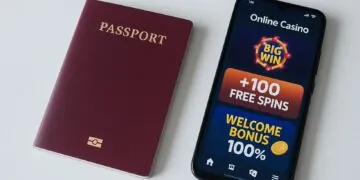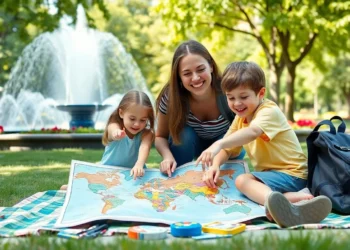Travel has always been about emotion — the thrill of discovery, the comfort of belonging, and the stories that stay long after the journey ends. Yet, for years, travel marketing relied on brochures, glossy ads, and celebrity endorsements to spark interest.
Today’s travelers, however, want more than a picture-perfect escape. They want to feel a destination before they visit it. They crave authenticity, participation, and experiences that stay with them.
That’s where Experiential Marketing (EM) steps in — not just as a promotional tool, but as a bridge between brand and memory. In a world where travelers seek meaning over material, EM creates lasting connections that inspire loyalty and drive bookings.
Defining Experiential Marketing in a Travel Context
Experiential Marketing brings destinations to life by engaging all the senses. It allows people to taste, touch, and feel a brand’s promise instead of simply reading about it. Whether it’s a pop-up rainforest in a city square or a VR tour of a resort, EM transforms advertising into experience.
It’s more than showcasing a destination; it’s storytelling through participation. Travelers step into the brand’s world — not as spectators, but as part of the narrative. When the experience feels real, the decision to book becomes natural.
In a competitive market where digital ads blur together, experiential campaigns stand out by creating emotional anchors. They remind travelers not just where they want to go, but why.
Shifting from Selling to Sharing
Old-school travel ads sell the destination. Experiential Marketing shares it. It replaces static visuals with immersive interactions — cooking workshops, interactive installations, or sensory previews that awaken curiosity.
This shift turns marketing from a one-way message into a two-way relationship. People don’t just watch the story unfold; they become part of it. And when they do, they remember it.
The Difference Between a Trip and an Experience
A trip begins with a booking and ends with a return flight. An experience, on the other hand, changes the traveler. It offers perspective, connection, and emotion.
EM focuses on selling transformation, not transportation. When a traveler walks through a VR simulation of a mountain lodge or tastes local food at a brand event, they start to imagine the feeling of being there. That emotional preview drives real-world decisions — because people buy experiences, not itineraries.
The Core Benefits: Deepening Traveler Engagement and Loyalty
Experiential Marketing works because it taps into how we form memories. Emotions make experiences stick, and the brands behind those moments become part of that memory.
Fostering Brand Loyalty through High-Value Emotion
Memorable experiences trigger loyalty more effectively than any discount or promotion. According to the “peak-end rule,” people remember emotional highs and how something ended — not the small details in between.
When a hotel surprises guests with a sunset dinner or a travel brand curates a behind-the-scenes local experience, those emotional moments become the story travelers share. They feel valued — and that translates into long-term affinity.

This idea shines in incentive group travel, where companies reward employees or clients with curated travel experiences. These trips mix exclusivity, adventure, and recognition, strengthening emotional ties and reinforcing brand loyalty. It’s EM in its purest form — transforming a journey into a shared celebration of achievement and connection.
Creating Shareable Moments and User-Generated Content
In the age of TikTok and Instagram, every traveler doubles as a storyteller. Experiential Marketing thrives in this environment because it naturally creates content worth sharing.
Brands now design visually striking moments — a floating breakfast in Bali, a desert stargazing dome, or a pop-up travel booth that smells like ocean air. These experiences invite people to capture and share, extending a brand’s reach organically.
User-generated content acts as social proof. When travelers post real experiences, it carries authenticity that paid campaigns can’t replicate. EM builds these shareable touchpoints intentionally, turning travelers into ambassadors.
Tactical Applications: EM in the Modern Travel Landscape
The true strength of Experiential Marketing lies in its adaptability. From digital previews to real-world activations, it touches every part of the traveler’s journey.
Immersive Technology and Pre-Trip Engagement
Virtual and augmented reality are now essential tools in experiential strategy. A VR walkthrough of a safari lodge or cruise ship allows travelers to explore before booking. They can sense the space, hear the sounds, and visualize the moment — turning hesitation into excitement.
These immersive previews help travelers feel confident about their choices and reduce decision fatigue. EM ensures the first “wow” moment happens before they even board the plane.
Enhancing the Remote and ‘Off-Grid’ Experience
Adventure travel and glamping are more popular than ever, but travelers still expect comfort and connectivity. Here, EM extends beyond aesthetics — it’s about making remote travel seamless and emotionally fulfilling.
Brands that combine nature with convenience elevate the experience. Reliable connectivity, for example, allows travelers to share their adventures in real time. Integrating satellite internet for camping turns a rugged trip into a connected retreat, ensuring guests stay safe, entertained, and in touch while exploring the wild.
Technology, when used thoughtfully, enhances the sense of freedom rather than interrupting it — proving that even in remote settings, EM can transform practical solutions into emotional value.
Conclusion:
Experiential Marketing reminds us that in travel, emotion is everything. While digital ads capture attention, real experiences capture hearts.
By engaging the senses and inviting participation, EM transforms marketing from information into inspiration. It drives real ROI — not just in bookings, but in loyalty, advocacy, and brand memory.
Travelers may forget prices and promotions, but they never forget how a brand made them feel. And that’s where the real journey begins.










